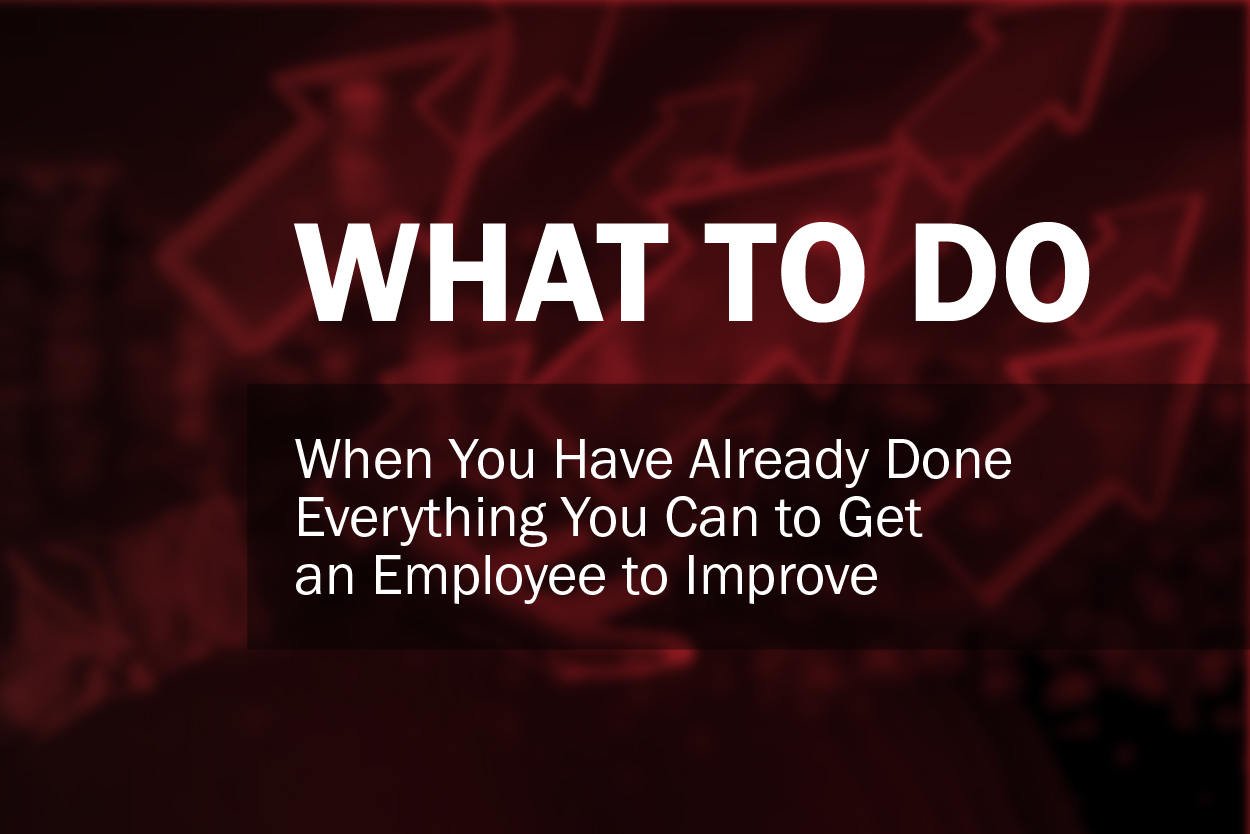By Guy Harris
Coaching and performance questions are among the most frequent types of questions I get when working with new and front-line leaders. Among those questions, the most common question is often phrased this way:
"How do I discipline someone when I’ve already done everything I know to do to get them to improve?"
This question (and the answer to it) is closely related to one of my prior blog posts. What to Do About a Team Member Who is Doing Nothing Right.
As I said in my earlier article, the short answer is to start the process of managing them out of the organization (with a qualifier).
The qualifier on my answer connects to the one-word difference between the question as often asked and the title of this post. That word is “discipline.”
Here’s the issue:
This question and the related frustration usually come in the context of working with a member of the team who is doing most things well and some things okay and not perfect.
The question rarely comes in a situation where the leader is working with a person who is clearly not performing up to minimum standards. Most people know what to do in that situation: you do what you need to do to get the person off your team.
Here’s the very big AND: rarely is the person in question performing at a truly unacceptable level. They are usually in the “I wouldn’t fire them over it, but I sure do wish they would improve” range.
That’s the rub.
When a person is mostly okay with a few frustrating or irritating behaviors, the temptation is to think about how to discipline them rather than how to coach them.
I’m making a subtle distinction between coaching and discipline. I am making the distinction to draw attention to how leaders think about and frame their actions more than I am to the specific tactics and strategies employed.
Discipline tends to have a “what negative consequence can I give this person to make them change their behaviors” thinking behind it.
Coaching (in the context that I use the word) has a “how can I connect with this person so that they see the benefits of doing things a different way” thinking.
Disciplinary thinking leans negative. Coaching thinking leans positive.
Discipline tends towards confrontation, pressure, “making” people do things a different way. Coaching tends towards conversation, understanding the other person’s perspective, and “inviting” people to do things a different way.
Back to resolving the issue in the title of this post: what to do when you have already done everything you can to get an employee to improve. My answer assumes that the issue in question falls in the “I wish it were better” category rather than the “it must improve or else category.” In the latter category, discipline, as I defined it above, is probably the right move.
The specific techniques, phrases, and strategies vary a great deal depending on the details of the issue at hand, and they all stem from a simple change in how you think about or frame the discussion.
Shift your focus from what you can do to get them to change their behavior to how you can engage with them so that they want to change their behavior. The change in their behaviors and results will often come from the change in your thinking about how to talk with them about their behaviors and results.


0 comments